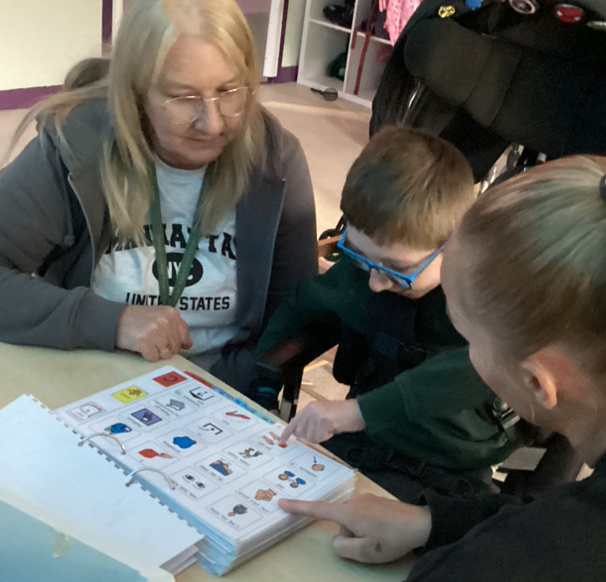My Communication
My Communication is all about helping pupils develop the skills they need to express themselves, understand others, and build relationships. This includes:
- Speaking and Listening – Encouraging children to use their voice, gestures, or communication aids to share their thoughts and needs.
- Understanding Language – Supporting pupils to make sense of what others are saying through visual cues, symbols, and structured routines.
- Reading and Writing – Using tailored approaches to help children engage with stories, symbols, and mark-making in ways that are meaningful to them.
- Social Interaction – Building confidence in turn-taking, making choices, and communicating with peers and adults in a variety of settings.
We use a wide range of strategies including Makaton, PECS, AAC devices, and sensory stories to ensure every child can access learning in a way that suits them best.
Our goal is to empower every pupil to find their voice — however that may look — and to feel confident, understood, and included in all aspects of school life.
Basic Principles
My Communication centres around the basic premise that communication is, at its core, a fairly simple business, but that ‘education’ has made it unnecessarily complicated for those with severe or moderate learning difficulties. We have perhaps, been far too concerned with the notion of being literate rather than the notion of being a communicator.
My Communication focusses on needing three essentials in order to communicate:
1. A motivation (a reason) for communicating
2. A means (a method) of communicating
3. Someone (a partner or partners) to communicate to.
Springwood Heath's 10 Areas of Communicative Learning
- Imperative Communications
- Following Instructions
- Declarative Communications
- Dynamic Communications
- Narratives
- Formal social interactions with familiar and unfamiliar people
- Personalised Reading and Writing
- Non-verbal, Behavioural Communications
- Peer to Peer Communications
- Augmented and Alternative Communications (AAC)
Intensive Interaction
At Springwood Heath, we use Intensive Interaction to support pupils who are at the early stages of communication and social development.
This approach focuses on building trusting relationships and helping children develop the fundamentals of communication, such as:
- Eye contact
- Shared attention
- Turn-taking
- Facial expressions
- Enjoying interactions with others
Staff follow the child’s lead, using repetition, mirroring, and gentle responses to create meaningful, enjoyable exchanges. These interactions help children feel safe, understood, and more confident in connecting with others.
Intensive Interaction is a powerful way to support pupils with complex needs, helping them build the foundations for communication in a relaxed, pressure-free environment.
Process Based Learning
Communication is by its very nature predominantly process based rather than skill based; that is, learners will learn the process of communication by communicating, and the more opportunities they have of communicating, the more secure their learning will be.
Augmented and Alternative Communications (AAC)
Some pupils use Augmentative and Alternative Communication (AAC).
AAC includes a wide range of tools and strategies that help children express themselves when speech is limited or developing. These may include:
- Visual symbols and communication boards
- Makaton signing
- PECS (Picture Exchange Communication System)
- Voice output devices and iPad apps
- Gestures and body language
Our staff are trained to use AAC throughout the school day, ensuring that pupils can make choices, share their thoughts, and take part in learning and social activities. We work closely with speech and language therapists to tailor communication systems to each child’s needs.
AAC is not just a tool — it’s a bridge to connection, confidence, and independence.




